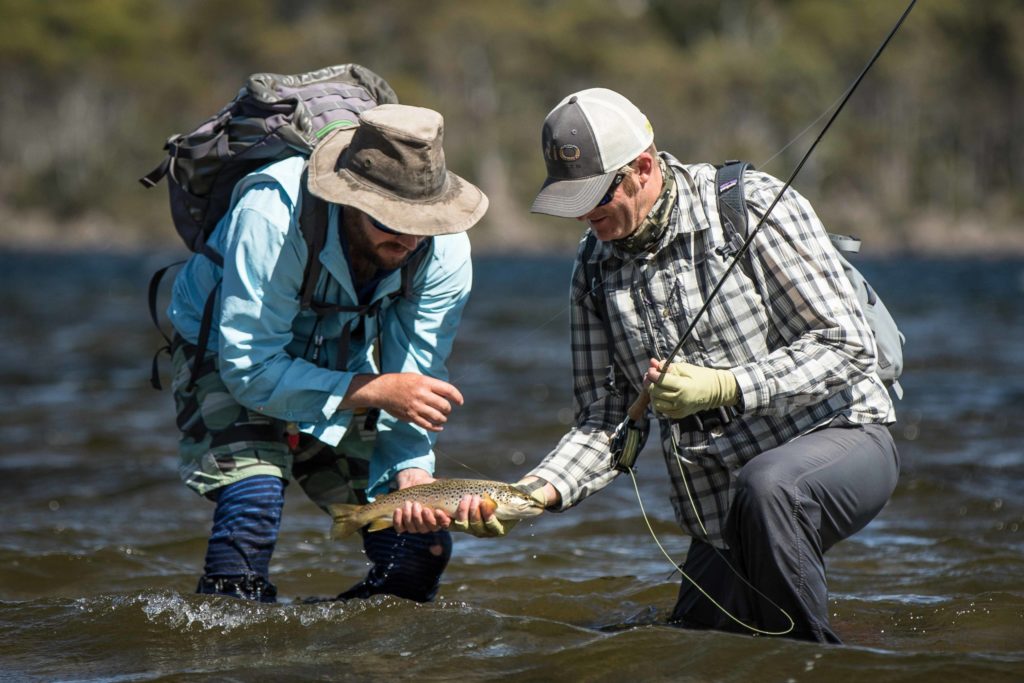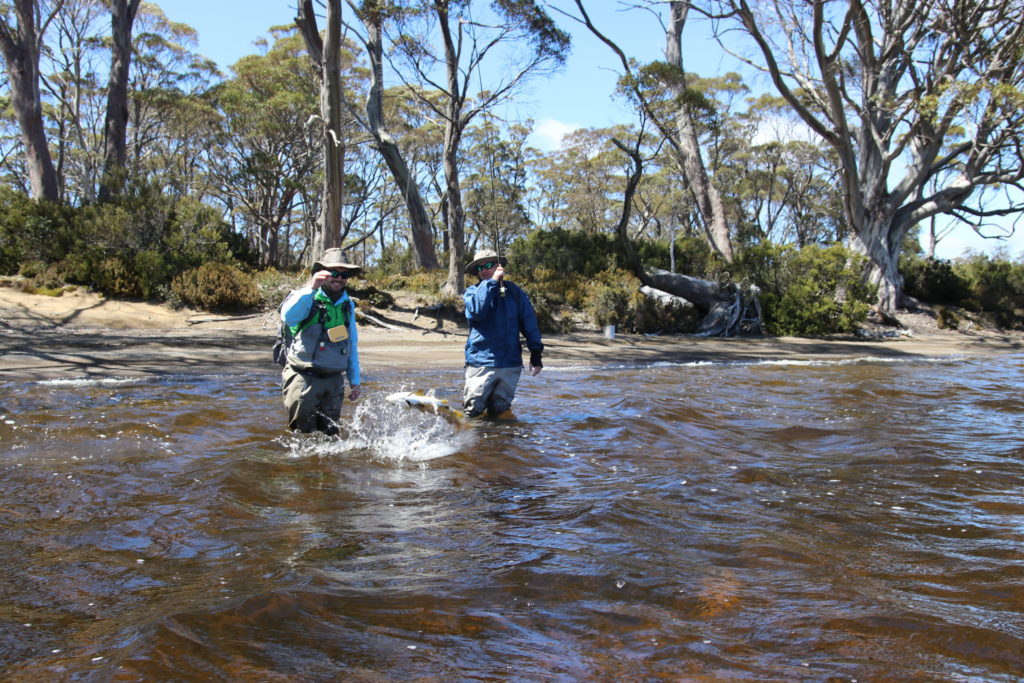The season so far…
Spring and early summer river fishing has been very dynamic. River levels were extremely reactive to rainfall (rising quickly), which meant taking each day as it comes from a fishing-planning perspective. With the extra flows and floods, the average fish size in the Mersey and Meander was bigger than previous seasons, with some real thumpers being landed. The South Esk has had high levels right up until Christmas, with a new cohort of young fish up to 2lbs working small black spinners and damsels most days, and some beautiful clean gravel runs created since the high flows of winter. Our best flies included our French Nymph variant, and Chartreuse Caddis nymph, followed by the Fastwater Dun.
The small streams of the north-east are in the middle of the best season since 2013, with fish numbers back up to the usual high numbers. The big winter floods have restructured some of these small streams beautifully, lengthening the best pools by consolidating smaller log jams that were previously found every ten metres or so, into single log jams and associated riffles every thirty metres or so. Snowflake caddis have generated terrific hatches, and it’s been dry fly all the way! Our favourite flies have been the Scruffy (size 12) and Glister-bodied Parachute Coachman (size 14). The St Pats, North Esk, South Esk, Ringarooma and tributaries have all been excellent destinations, and fish in the 12-16 inch range are most common.

The lakes of the Central Plateau are looking great, and almost un-recognisable compared to this time last year. Great Lake has filled something like seven-metres, and nearly all other Hydro Lakes spilled over winter. Beetle falls have driven the fishing on-and-off since early November, with mayfly nymphs and hatches also becoming prominent by early December. Little Pine and Great Lake are both having good seasons for fish condition, and the Ostrich Herl nymph has proved deadly on Penstock and the Pine. Arthurs is still sporadic, but producing some excellent quality fish to those willing to walk the edges and cover some ground.
The Western Lakes were equally wet, with early spring water levels experienced up to the first week of December. This led to an excellent and lengthy frog season, but delayed the mayfly season from a normal mid-November start, to an early December start. The Nineteen Lagoons has been predictably popular, with the lakes and lagoons of the Little Pine River system performing the best to date. The road to the Julian Lakes is expected to open close to Australia Day, conditions permitting, and the Talinah track is currently open.
Fishing from our wilderness huts in the Western Lakes has featured all the weather imaginable, from balmy blue sky days through to snow. Some unusually large fish in the main lakes have been quite exciting (up to six pounds), but have proved hard to land amongst rocks and rushes. The younger year-classes have ranged from 2 ¾ to 4lbs, a great size. The random mixtures of frogs, beetles and midge on the menu has made fly selection has been quite variable, but one of our big terrestrial dries has been really successful (it’s a bit of a prototype we’ve worked on for a couple seasons), as has the Pheasant Tail Black Spinner, and Fuzzle Buggers fished to tailers in the waves. We can’t wait to host head to a new water that we’ve discovered a few kilometres from camp, after recently locating a sneaky shortcut to get there.

A leaping Western Lakes brown trout, polaroided 400 metres from RiverFly Wilderness Huts. Pic by J Laverty.
An extra positive from our wilderness camp this season has been the increased presence of Tasmanian devils this year! With several sightings and lots of scats around camp, guide Greg French should have known better than leave is wading boots out at night. The inquisitive devils certainly appreciated the offering, pinching a boot, which has not been seen again!
Predictions for summer and autumn 2017
River and lake levels are great, and predictions of a mild summer and autumn gives anglers heaps of options. The north-east streams will be our pick for the best river destinations, given the excellent caddis and mayfly hatches to date, and the general excellent state of the waterways. Lots of juvenile grasshoppers are also out and about along the meadow-streams, and given the fortnightly rainfalls currently, conditions have so far been excellent for a late, bumper hopper season. There’s nothing we love more than sight-fishing big hopper dries on the rivers!
Continued mayfly hatches, and consistent terrestrial falls should drive the fishing on the Central Plateau, and continued muggy weather will start to produce some brilliant daylight tailing on clouded days. Little Pine should continue to fish well, and Great Lake windlane ‘sharks’ will become more established.
Big fish love beetle falls, so we’ll also plan to hunt trophies from our wilderness Western Lakes camp as weather permits during January and February, along with focusing on the bread and butter dry-fly sight fishing that forms the mainstay of our wilderness trips. Contact us if you would like to join a trip.
Thanks for reading, and have a great 2017, from Daniel and Simone Hackett, and the RiverFly 1864 team.
Guided fly fishing, tuition, and destination flyshop – Sage, Scott, Patagonia, Simms and Buff dealer
